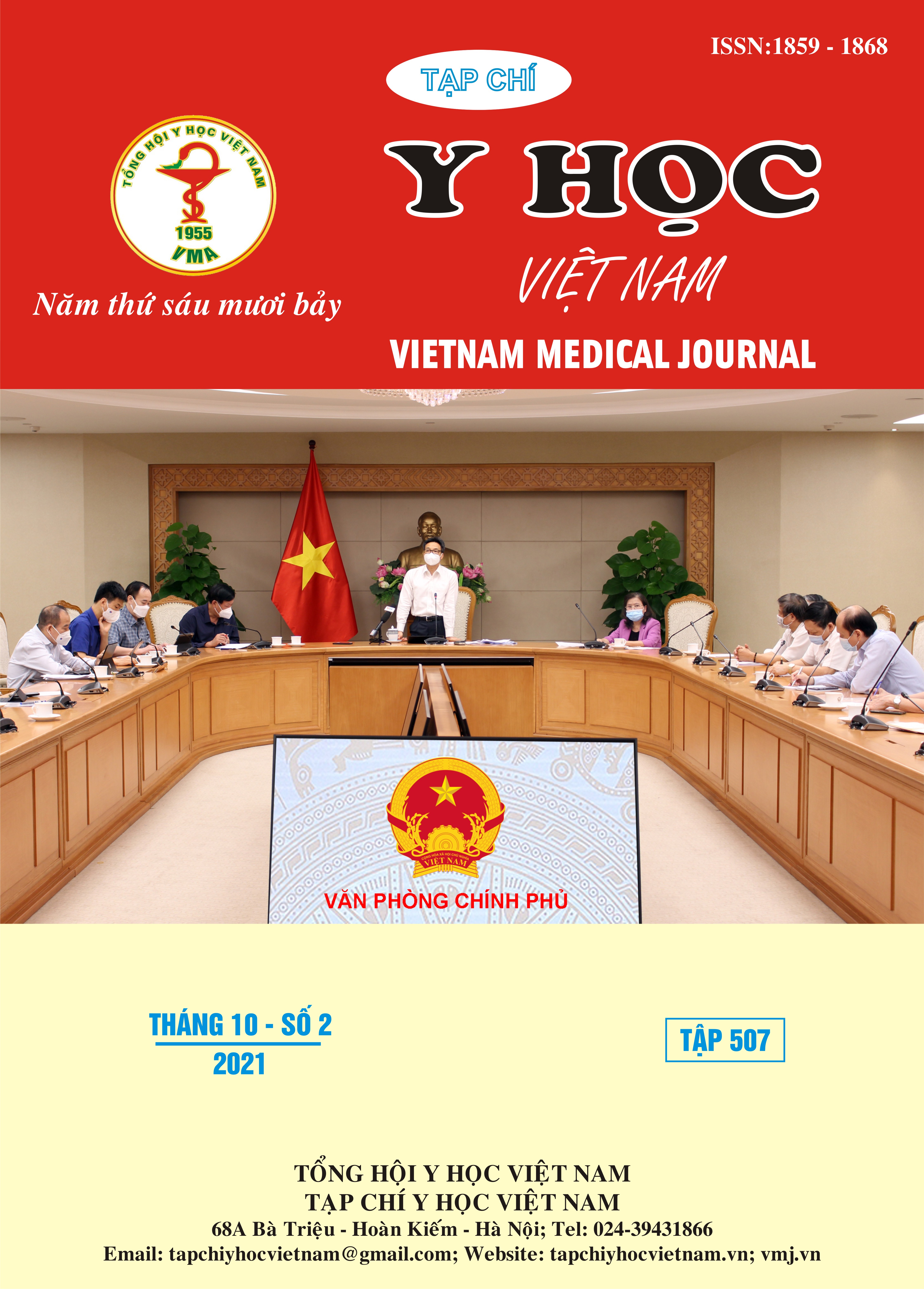RESULTS OF THYROIDECTOMY FORBENIGN THYROID NODULEAT HANOI MEDICAL UNIVERSITY HOSPITAL
Main Article Content
Abstract
Objective: Evaluate theearly results ofendoscopic thyroidectomy via unilateral axillo-breast approach (UABA) in the treatment of benign thyroid tumor at Hanoi Medical University Hospital. Subjects and Methods: Descriptive retrospective studies 90 patients with benign thyroid tumors were treated (lobectomy or lobectomy+ismuthsectomy) byopen thyroidectomy (45 patients) and byUABA (45 patients) at Hanoi Medical University Hospital from 01/2019 to 06/2019. Results: Mean of age was 51,4±12,8 years in the open thyroidectomy group; 35,3±8,2 years in the UABA group. 91,1% patients were female. The solitary tumor occults 80% in the open thyroidectomy group and 71,1% in the UABA group;thethyroid tumors in the right lobe were 52,8% in the open thyroidectomy group and 59,4% in thẻ UABA group; the average tumor size was 25,9±10, 1mm in the open thyroidectomy group and 23,7±9,8mm in the UABA group. The tumors classified into TIRADS 3 by ultrasound was 77,8% in both groups. Most common pathology was colloid goitreaccounting for 82,2% in the open thyroidectomy group and 84,4% in the UABA group. Lobectomy was applied in 73,3% cases in the open thyroidectomy group and 97,8% cases in the UABA group. The mean operating time was 41,7±10,2 minutes in the open thyroidectomy group and 51,2±7,1 minutes in the UABA group, the mean hospitali zation was 5,8±1,3 days in the open thyroidectomy group and 6,0±1,2 days in the UABA group. There were no cases that changed from the UABA to the open thyroidectomy group. There was no postoperative complications in the open thyroidectomy group, in the UABA group there was 1 case (2.2%) of postoperative hematoma, which resolved after 1 day of compression. Mild postoperative pain accounted for 62.2% of cases in the open thyroidectomy group and 82.2% of cases in the UABA group, there were no cases of severe postoperative pain in both groups. There were no patients that were not satisfied with the surgical results in both groups; 75,6% of cases were very satisfield in the open thyroidectomy group and 80% in the UABA group. Conclusions: Open thyroidectomy and endoscopic thyroidectomy via unilateral axillo-breast approachweresafe, the rate of complications was low,in which endoscopic thyroidectomy was less painful after surgery and achieved good cosmetic outcomes than open thyroidectomy.
Article Details
Keywords
Thyroid nodule, endoscopy thyroidectomy, UABA
References
2. Gharib H, Papini E, Garber JR, et al (2016). American Association of Clinical Endocrinologists, American College of Endocrinology, and Associazione Medici Endocrinologi Medical Guidelines for Clinical Practice for the Diagnosis and Management of Thyroid Nodules - 2016 Update Appendix. Endocrine Practice, 22,1-60.
3. Trịnh Minh Tranh (2013), Nghiên cứu chỉ định điều trị bướu giáp đơn nhân bằng phẫu thuật nội soi, Luận án tiến sỹ Y học, Đại học Y dược tp Hồ Chí Minh.
4. Lê Văn Giáp (2014), Nghiên cứu đặc điểm lâm sàng, cận lâm sàng và đánh giá kết quả phẫu thuật u lành tính một thùy tuyến giáp qua đường cổ bên, Luận văn Thạc sĩ Y học, Đại học Y Hà Nội, HN.
5. Hershman J. M. (2005). Perchlorate and thyroid function: what are the environmental issues?. Thyroid: official journal of the American Thyroid Association, 15(5), 427–431.
6. Đinh Xuân Cường (2004). “Nghiên cứu đặc điểm lâm sàng, mô bệnh học và kết quả điều trị phẫu thuật ung thư tuyến giáp tại bệnh viện K”. Luận văn thạc sĩ y học, Hà Nội, 33 – 48.
7. Trần Ngọc Lương (2011). Đánh giá kết quả phẫu thuật nội soi điều trị bướu giáp lành tính. Tạp chí phẫu thuật nội soi và nội soi Việt Nam. 1(2), 20-24.
8. Sasaki A, Nakajima J, Ikeda K, Otsuka K, Koeda K, Wakabayashi G (2008). Endoscopic Thyroidectomy by the Breast Approach: A Single Institution’s 9-year Experience. World journal of surgery, 232,381-385.


